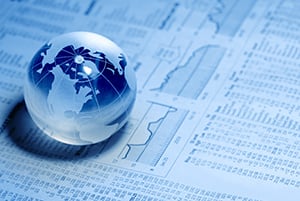 In recent posts, we’ve looked at both the fundamentals underlying market response to the Ukraine invasion, as well as the historical data around similar events. The conclusions were generally reassuring to us as investors. Today, though, I want to do something a bit different. Rather than consider the specifics and what they might mean, I want to ask more general questions. How should we be thinking about this? And can we use that to draw any conclusions around the likely next developments?
In recent posts, we’ve looked at both the fundamentals underlying market response to the Ukraine invasion, as well as the historical data around similar events. The conclusions were generally reassuring to us as investors. Today, though, I want to do something a bit different. Rather than consider the specifics and what they might mean, I want to ask more general questions. How should we be thinking about this? And can we use that to draw any conclusions around the likely next developments?
Evaluating a Novel Situation
What I mean by this is that when we evaluate a novel situation, we have different mental models we use, often without thinking about it. As I was working through the implications of the invasion, for instance, I found myself switching between two very different modes of thought. The first said this will soon pass, and we should be thinking about what comes after the invasion. The second, though, said we don’t know where this is going or how bad it will get—and we can’t look past it until we do.
For simplicity’s sake, let’s call these two models the natural disaster model (what comes after the hurricane?) and the pandemic model (which tries to figure out when, or if, this will end). Both are useful, but they give very different thought processes and conclusions, and it was not clear to me which was the better model.
The natural disaster model treats the invasion like a hurricane, which comes in, does a lot of damage, and then has an extended cleanup. The pandemic model treats the invasion as the first wave of trouble, to be followed by an indeterminate number of waves of subsequent problems. Of the two, for me at least, the pandemic model is the more intuitively appealing. It captures the inevitable second-order problems and effects that will be caused by the invasion. The natural disaster model simply looks too simple.
Natural Disaster Model
Yet when you review the market data from yesterday, the natural disaster model is a much better fit with how markets treat such events. The initial event hits markets, which then assess and respond to the damage and start recovering. This model also seems to be a better match for lived experience. When Russia invaded and annexed Crimea, for example, the world went back to normal quite quickly, to the extent that most of us did not remember that Russian invasion of only eight years ago. In this sense, yesterday’s invasion is likely to pass quickly both from the markets and from memory. If that is the case, then the natural disaster model will hold, and the effects should be short-lived. We won’t be talking about this in a couple of months.
Pandemic Model
That may be. But I still find the pandemic model compelling, and we need to think that through further. In the pandemic model, Ukraine would be the first wave: shocking and damaging, but ultimately not the worst of it. In this case, subsequent waves could well be Russian takeovers of other countries. Looking at the geopolitical map, that could be countries that, like Ukraine, were historical buffers between Russia and the West (e.g., the Baltics or Poland) or countries that historically were part of the central Russian core (e.g., Belorussia or Kazakhstan).
A one-off event could easily become a pattern if Putin is able and willing to make it so. If it happened once, it could happen again. That is what we need to watch for—the shift from a natural disaster to a pandemic.
Time Will Tell
Right now, the outcome is likely undetermined and the next several weeks will be critical. If Ukraine fights back effectively, and if the West stands together, we maximize the chance this invasion will “only” be a natural disaster. If not, and Putin sees this as a valid and successful strategy, then the likelihood of an extended pandemic-style series of wars becomes much more likely.
And this is why we need to consider both models in our analysis. Both are useful, but they give very different thought processes and conclusions, and it is not yet clear which is the better model. Right now, the natural disaster model seems like the best fit for the data, which is good news for us as investors. But I will be watching future events to see if the pandemic model starts to become more relevant.


 Print
Print

